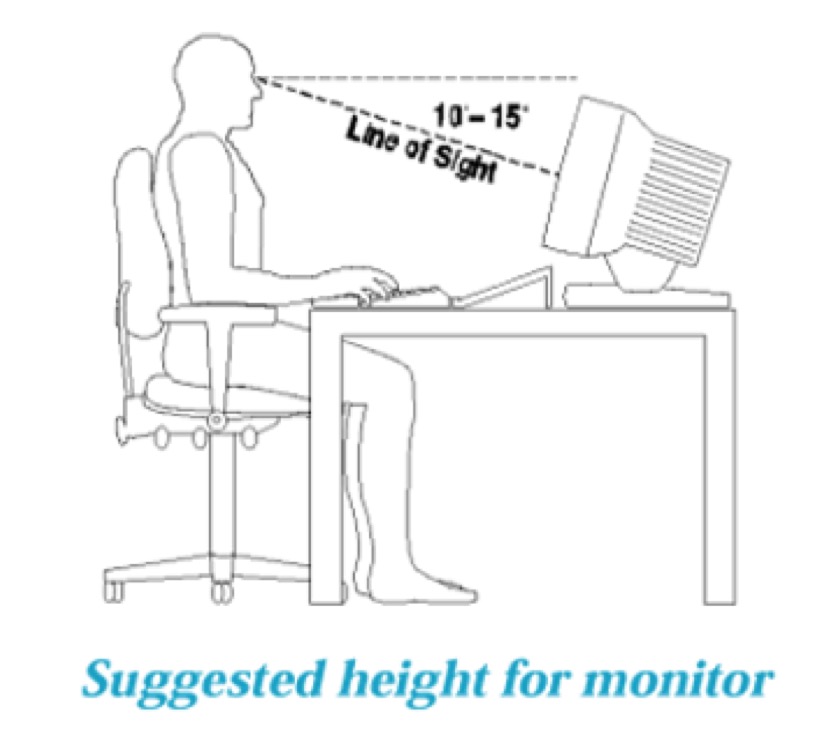When our work suddenly gets shifted from our workplace office to a home location not everyone has the space or equipment needed to ensure proper ergonomics. Here are a few important tips to remember no matter where you are completing your computer work.
We can decrease our risk of overuse injuries, especially if our temporary workstation conditions are not ideal, by sharing our time between sitting and standing workstations. The time at each does not have to be strict so long as you are not at either for too long. 60 minutes at one and 30 minutes at the other or any time frame close to this would be fine. The idea is to shift the pressures and stresses from one area of the body to another.
Also, taking adequate rest breaks from computer tasks is very important. Every 45 to 60 minutes take 30 seconds or a minute to take a short walk, use the washroom, get a drink, do a few stretches or anything that gives you a microbreak from the computer.
Vary your work tasks whenever possible so you are not spending too much time on any particular task. If your work requires you to spend some time typing or data entry, time internet researching, reading documents for review and time spent on the phone try to divide your time spent on these tasks to vary the activity you are doing. You can also vary the position you are in when completing the tasks (I.e. stand for telephone use or sustained reading and then sitting for typing and data entry tasks).
The last important key is to know that small changes are a good thing. If something doesn’t feel quite right then move it around slightly. Sometimes something will feel good one day but the next day feel a bit too low or a bit too high, then move it slightly. These recommendations are only guidelines and any position for too long is not good for us.
Sitting workstation
- Ideal to have elbows and knees at 90-degree angles where the hip is level with the knee or slightly above and the forearms are level with the work surface or slightly above.
- Ensure good support for the lower back with a proper chair and provide additional support with a pillow or rolled up towel if necessary.
- Provide support for the feet so they are not hanging and placing pressure on the back of the thigh.
- Monitor should be placed at arms length or further away so long as you can read the font without struggling. Try to estimate the 15-degree angle position (as indicated in the picture below). Also, angle the monitor away slightly.
- If working from a laptop, use a wireless keyboard and mouse whenever possible and elevate the laptop to achieve a better monitor position. Angle the laptop screen away to better align the head and neck.

Standing workstation
- If you have the option of alternating between a sitting workstation and standing workstation.
- Try to mimic the same upper body positioning at your standing station; elbows level with work surface, wireless keyboard and mouse, laptop propped up and angled away slightly.
- Try to avoid prolonged standing on a hard surface without support under your feet. Using a floor mat or wearing a pair of shoes or sneakers can help fight fatigue in the legs and back and take pressure off the feet.
- Keep in mind that your monitor can be closer than arms length at your standing station if it feels more comfortable to be closer. It may also feel more comfortable for the monitor to be slightly higher than when in sitting.

Sarah is a Kinesiologist and runs the Fitness Centre at the Human Performance Centre. You can contact her at 738-3554
